Cuteness can be used to soften or disguise the unpalatable. Systems of power, from political ideologies to industrial corporations, often use cute as a tool of manipulation and control, harnessing its ability to promote positive feelings for their own strategic ends. Yet, cute’s ability to explore and communicate antagonistic qualities means that it can also be used as a form of critique and resistance. Increasingly, as cuteness becomes part of our everyday language, it is used simply to make things that may seem officious or overbearing more appealing.
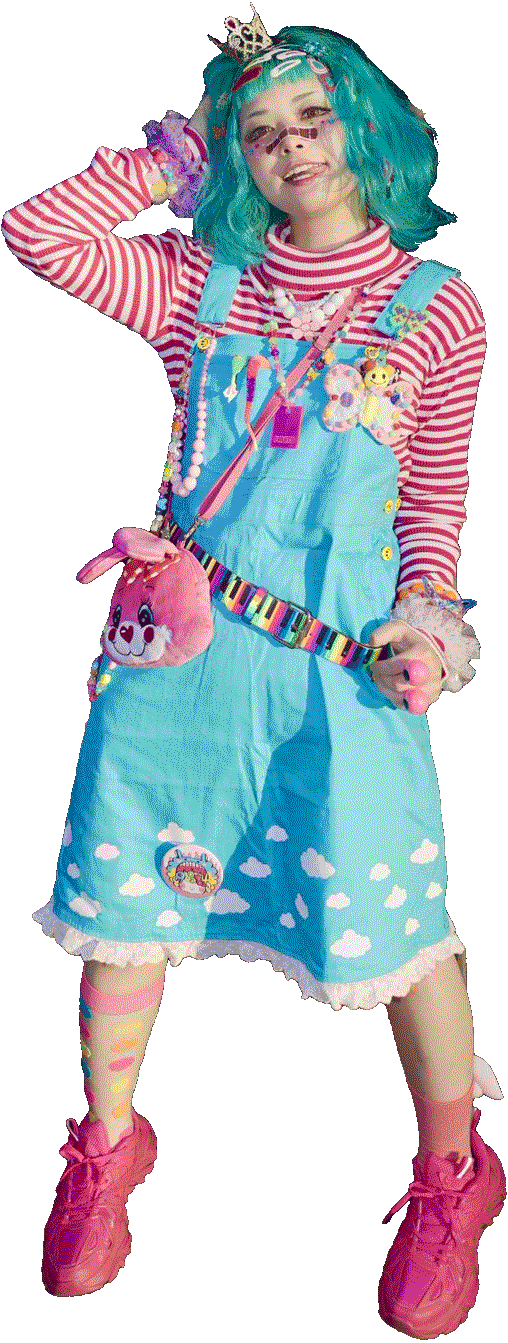
1
Decora
2023
Minacute, courtesy Minacute
Custom outfit
Decora fashion is a vibrant, queer-friendly and gender-inclusive movement local to Harajuku Tokyo. These practitioners decorate their bodies with layers of found objects and handmade accessories over the top of bright clothing sourced from both vintage and specialised stores. Designers that cater to this group in Harajuku include 6% DOKI DOKI, Nile Perch, ACDC Rag, YOSUKE USA and minacute. Decora kids celebrate all things KAWAII, incorporating objects from the cultural landscapes of Harajuku and daily lives. These objects hold personal significance to them, representing concepts of self-love, play, nostalgia and care. Gathering in Harajuku and in recent years online on platforms like TikTok and Instagram, decora kids pop on the streets and screens in a rainbow cacophony of colours and textures. This outfit has been assembled by street fashion icon, Haruka Kurebayashi. She has appeared in the pages of iconic Japanese fashion magazines including Tokyo FRUiTS and KERA as well as websites such as TOKYO Fashion. She is best known for her quirky style, but also for her commitment to inclusion and care for all in kawaii fandom spaces; her viral Instagram Reel ‘Kawaii is not a Slur’ calledout online bullies, making national headlines in Japan, and starting a community conversation about who can wear and use KAWAII culture. Displayed here is a dress designed by Kurebayashi for her label, Sugar Sprinkles, in collaboration with SPINNS, which she has coordinated with thrifted fashion. The accessories are sourced from a variety of specialist stores and independent artists including minacute and Miyamo. Minacute is a relatively new store to Harajuku, opening in 2021 with the concept that ‘being cute is essential to life’. When Claire’s JAPAN, a beloved store for decora kids, went bankrupt in 2020, the employees crowdfunded and relaunched the store concept under this new name. Miyamo is a highly sought after artist amongst Harajuku kids, best known for her wearable handpainted dolls and animal creatures.
words by Dr Megan Catherine Rose
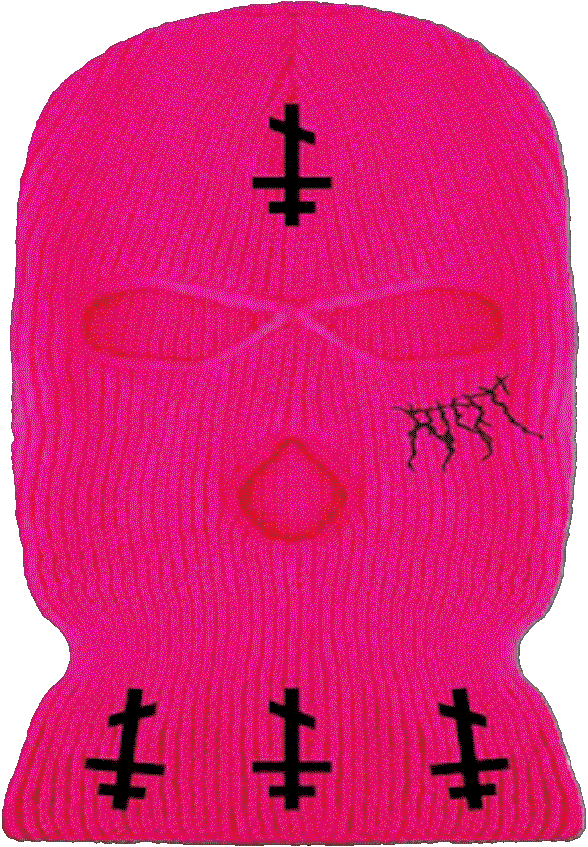
2
Riot Embroidered Balaclava
2023
Pussy Riot
Nadya Tolokonnikova is a musician, artist, activist, and founding member of the Russian feminist protest art collective Pussy Riot. In 2012 she was detained in a Russian prison and Siberian penal colony for 2 years following the group performance of the protest song ‘Punk Prayer’ in a Moscow church. Pussy Riot was known for its provocative sense of style, often teaming balaclavas with girly dresses. In naming Pussy Riot, Tolokonnikova and her fellow activists drew inspiration from the US Riot Grrrl movement, contrasting the tough-sounding word ‘riot’ with something traditionally seen as sweet and cute. Their instinct was also to reclaim the word ‘pussy’, which later found an echo in the worldwide ‘pussyhat’ movement of 2017, which saw women knit pink woolly hats with cat ears to wear to march for women’s rights in a reference to a recording of Donald Trump in which he claimed ‘to grab [women] by the pussy’. Tolokonnikova finds power in contrasts, mixing the cute with the political, and revelling in the perceived contradiction between bold and soft, dangerous and innocent. In her recent exhibition, Putin’s Ashes, she framed protest messages with pink plush fabric and small stuffed toys. This balaclava, in neon pink, is offered for sale on Tolokonnikova’s web store, where she uses the sewing skills learned when she was forced to make police uniforms in prison to make clothes that contain messages against political oppression, with all profits going to activist causes. ‘I didn’t believe that clothes could be so meaningful, but yeah, they can [be]. If it helps people empower themselves, I’m here for it.’
words by Claire Catterall

3
S****y Face Riot Shield,
2013
Jimmy Caulty
Acrylic and emulsion on polycarbonate
In 2012 British musician and artist Jimmy Cauty painted a smiley face on an old police riot shield and gave it to his step-daughter who was taking part in Occupy London’s encampment next to St Paul’s Cathedral, where they were protesting against the injustices of global economic and political systems. In readiness for the eventual eviction of the protesters by the police, Cauty had found three old police riot shields and painted them with bright yellow smiley faces, repurposing them as a self-protective measure for his step-daughter and others at the camp. A friendly and beloved icon, the smiley face was to signal the shield as a symbol of non-violent direct action. The shields had to be hidden at the camp as the police would judge them to be weapons in the hands of the Occupy protesters, an offence that would lead to their arrest. As Cauty’s wife later commented, ‘How is it right that during a protest of any kind full grown men in police uniforms are able to use shields but my eighteen-year-old daughter is not allowed to hold her own bright smiley shield up as a sign of both protest and peace and at the same time protect herself from flying fists and batons and heavy boots.’ Jimmy Cauty is one half of The KLF, a British electronic band and art project formed in London in 1987, and since known by a number of different names including The Justified Ancients of Mu Mu and the K Foundation. Since 2013, Cauty has released over 400 shields in many editions. They are all hand-painted on appropriated UK police riot shields, often bearing the battle scars of prior use, and signed by the artist. An edition of 50 was offered for sale in Dismaland, the Banksy-curated dystopian theme park in Weston-super-Mare, in 2015.
words by Claire Catterall
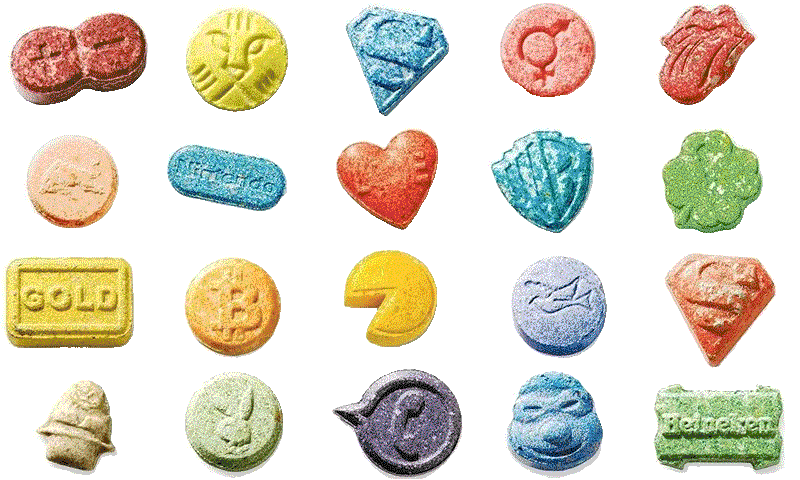
4
Prop Ecstasy Pills
2023
Morgan Spear
Clay
Ecstasy pills contain mostly MDMA, a potent recreational drug that gives its user feelings of euphoria and a mild psychedelic effect. However, many pills can contain almost anything; they have been known to be mixed with caffeine, ketamine, fentanyl or unknown substances. Either way, most people understand taking ecstasy to be a risky business. Home-testing kits are more widely available than ever, but each year we hear about a ‘bad batch’ of pills whose effects are not cute; they might keep their users awake for tens of hours, knock them out cold, or worse. Its risks notwithstanding, ecstasy has been an undeniable component of British rave culture since the 1990s, a nightlife scene defined by togetherness and community. Often, producers will press their pills in a recognisable shape, by which they can be identified. Perhaps calling it a ‘love heart’ or ‘smiley face’ makes the potentially dangerous drug go down a little more easily.
words by Phin Jennings

5
Bambi, a Life in the Woods
1928
Felix Salten, English translation by Whittaker Chambers
first English edition
The story of Bambi is best known from Disney’s celebrated 1942 film adaptation. However, Disney’s classic was adapted from the novel Bambi: A Life in the Woods, published in 1922 by the Austro-Hungarian writer and critic Felix Salten. Far from being a children’s story, Bambi was a parable about the inhumane treatment and dangerous precariousness of Jews and other minorities in what was then an increasingly fascist world. In many ways, the book’s prescient warnings foretold the horrors of the Holocaust. Indeed, in 1935 the book was banned by the Nazis, who recognised it as a political allegory on the treatment of Jews in Europe and burned it as Jewish propaganda. Disney had used the English-language version of Saltern’s book, as translated in 1928 by the American writer Whittaker Chambers (who was later revealed to be a Soviet spy) which, thanks to a controversial copyright ruling, has been the only one available for almost a century. It was only after the book entered the public domain in 2022 that the extent to which both the movie and the translation it was taken from had altered and overshadowed its source material has become clear.
words by Claire Catterall

6
Der Fuehrer als Tierfreund (The Führer, Friend to Animals)
1934
Heinrich Hoffmann, Adolf Hitler’s official photographer
Reproduction of a propaganda photograph
When Hitler became chancellor of Germany in 1933, his publicity machine immediately kicked into gear, masterminding a PR campaign to smooth his reputation as a violent political agitator and extreme antisemite. With his sights set firmly on absolute control of both Germany and Europe, it began to refocus his image as one of a man of cultivated taste with a rich domestic life and home-loving values. Part of this propaganda strategy involved Hitler being photographed with animals and children, apparently showing his ‘softer’, more human side. The caption for the postcards on which this photograph appeared translates as ‘The Fuehrer, Friend to Animals’. Here, Hitler is photographed by his official photographer, Heinrich Hoffmann, feeding a baby deer in his mountain home at the Berghof, a chalet near Berchtesgaden, perpetuating the fantasy of a kind, nature-loving man. In the years leading up to World War II, this public makeover was used strategically both at home and abroad to distract attention away from the disturbing reality of his policies. American publications such as Life, Vogue and The New York Times Magazine, lapped up such fantasies in approving features about Hitler’s home décor, urbane tastes and love for children and animals, even while Nazi atrocities were taking place.
words by Claire Catterall
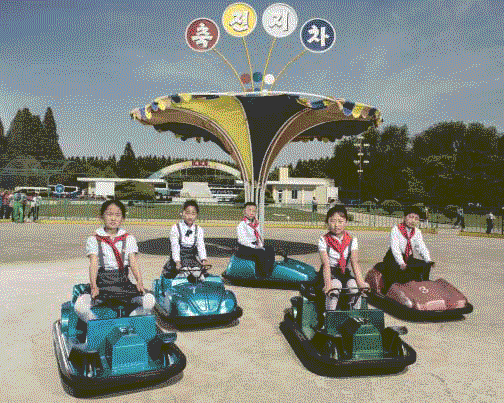
7
North Koreans
2020
Stephan Gladieu, courtesy the artist and School Gallery Paris
Exhibition prints
In 2020, French photographer Stephan Gladieu visited North Korea to photograph normal citizens of the country, which has been the subject of much speculation in the West owing to its totalitarian political regime and tightly controlled external communications. A lot of the time, his attempts to take candid shots of daily life were diverted by his chaperones and he ended up instead taking semi-staged photographs of smiling faces in colourful environments. The result is a slightly eerie series of images of happy-looking people donning colourful outfits in sweet and harmless, but clearly manufactured, circumstances. Gladieu commented on the series that ‘their absolute quest for perfection perfectly served my work.’ The photographs raise questions about the nature of their subjects' lives, hidden behind the veneer captured by the artist.
words by Phin Jennings
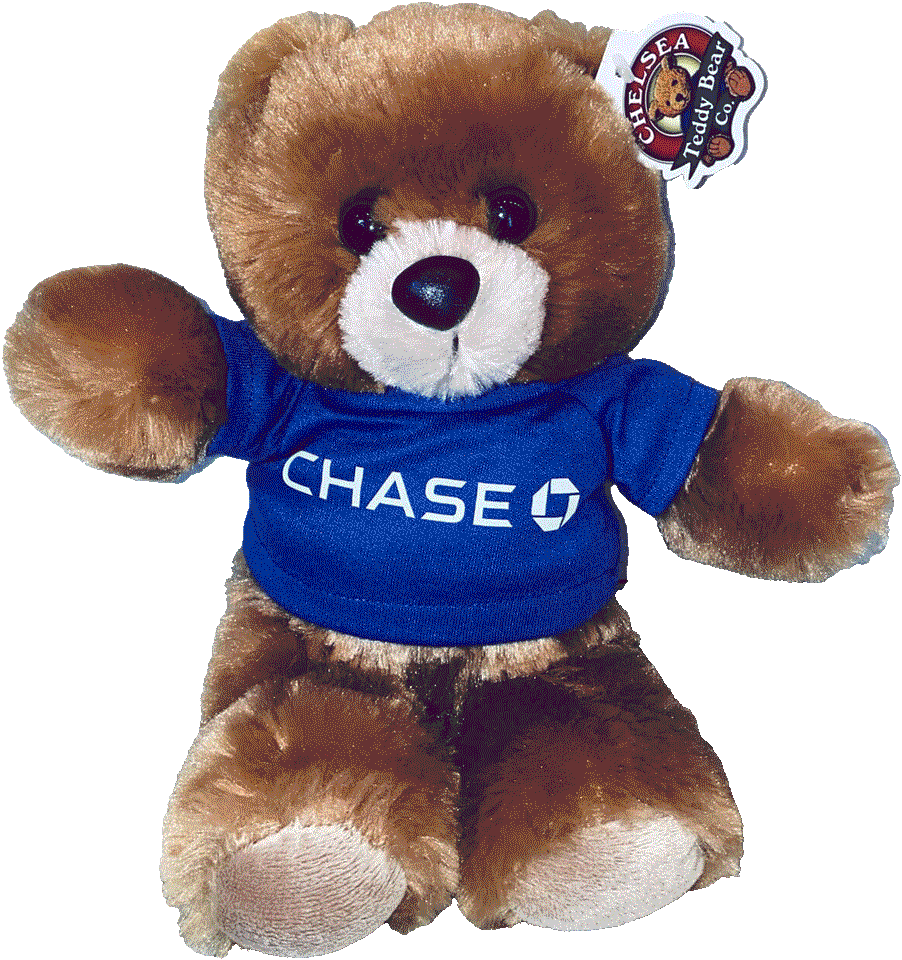
8
Chase Bank Teddy Bear
Maker and date unknown
Plushie
Nowadays, large and mega corporations dominate our lives, running our economies, holding our personal data, and governing our social relationships. Financial institutions in particular play a large role managing wealth across society, and yield significant power in terms of governmental policy, blurring the distinction between public and private. These companies regularly turn to cute’s fluffy aesthetic, employing it as customer-friendly marketing strategy that has broad appeal. Animal mascots and free cuddly merchandise sit alongside sports sponsorships, brand activations, and product incentives as ways of maintaining existing customers and attracting new ones. This adorable bear won’t acknowledge any of these power dynamics, but will serve to embed the brand in the households of thousands of savers and spenders.
words by Dr Cliff Lauson
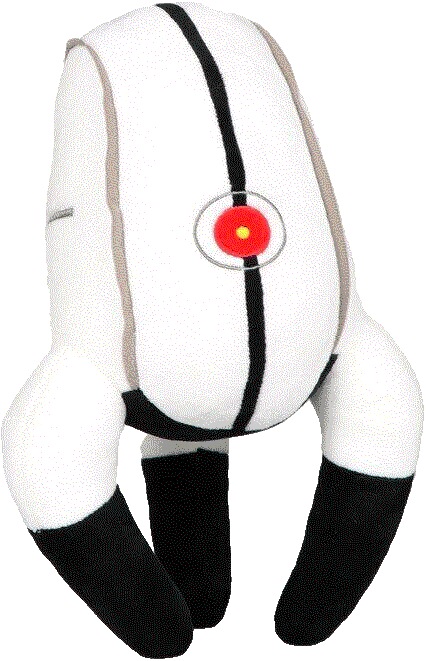
9
Portal Sentry Turret
2022
Valve Corporation
plushie
This plushie toy is a cuddly representation of a weapon with unlimited ammunition and deadly accuracy whose utility is to kill indiscriminately. A merchandising opportunity first realised by Portal fan Jonathan Guberman in 2011, with a homemade version on his personal blog, the plushie has since been mass-manufactured by Portal’s developers Valve Software. The video game Portal was first released in 2007, and Portal 2 in 2011. In the game, players take the role of Chell, a human test subject trapped in a science laboratory, who must navigate a route out under the manipulative supervision of an AI entity named GLaDOS. The game environment is inhabited by two classes of ambiguously adorable objects: the Sentry Turrets, robotic machine guns with cheerful voices and friendly personalities, and the Companion Cube, an inanimate box that Chell befriends and is later forced to ‘euthanise’ in order to progress to the next level. Portal makes cuteness central to the way it represents systems of control, echoing the way in which cuteness plays a role in contemporary life and its concomitant arrangements of power. In this way, Portal can be seen to present a critique of contemporary power structures. By exacerbating the ambiguities of cuteness, Portal directs our attention to the controlling systems in which the cute object functions. As the scholar Megan Arkenberg has pointed out, this not only offers a path to critique, it can also be seen as a mode of resistance.
words by Claire Catterall

10
Oxycontin Pill
Unbranded replica of 1996 merchandise
Plushie
Oxycodone, sold under a number of brand names including Oxycontin, is one of the most widely recreationally used opioids in America. As of 2019 Purdue Pharma, the brand that manufactured Oxycontin, had had over 1,000 lawsuits initiated against them, with total claims filed at more than $2 trillion. The company has since applied for bankruptcy. Since the 1950s, it was owned by the Sackler family, one of whom was quoted as saying ‘we're going to make a blizzard of prescriptions that will bury the competition’. It seems like another of the company's competitive strategies was to release a line of merchandise, gifted to prescribing doctors and other stakeholders in 2016. The plush pills they gave away, with arms outstretched ready for a cuddle, have become a symbol of the company's false veneer of kindness and have been bootlegged many times since their initial release.
words by Phin Jennings
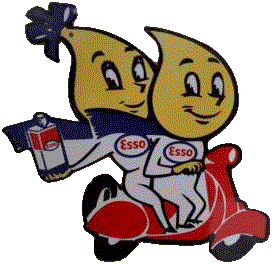
11
Esso Aluminium Sign
2023
Retro Metal Sign
In 1958, The Esso Oil Drop Boy, named 'Happy', was introduced in the USA for Standard Oil company, with the trademarked slogan 'Happy Motoring'. 'Happy' successfully anthropomorphises oil, transforming a filthy, destructive substance into something lively and endearing. Cuteness, then, became a mechanism of sanitation, and the paradox it allowed is even more striking than ever. EDF Energy's dancing orange mascot 'Zingy' and British Gas' homely 'Wilbur the penguin' advertisements demonstrate the persistence of this trend - almost a century later, the energy industry still employs cuteness as a method to win over the public.
words by Vaishna Surjid
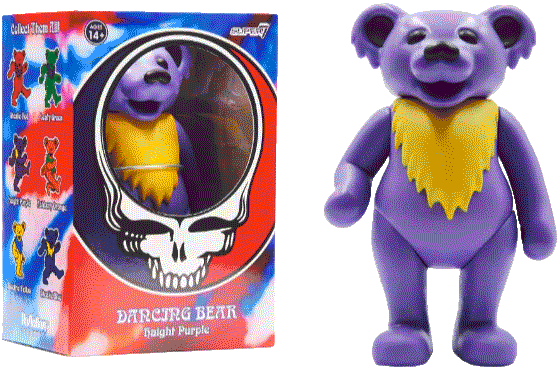
12
Grateful Dead Dancing Bear
2021
Super 7
Vinyl figure
Depending on the angle you look at them from, Grateful Dead's music, community and aesthetic could be thought of either as a sugar-coated pill, or one that is sweet to its core. Both viewpoints are embodied by their dancing bear logo. During their glory days in the 1960s and 1970s, the band's setlists varied from concert to concert and they were known for improvised onstage jams, meaning that a lot of their fans - known as Deadheads - followed them on tour from one city to the next. They erected makeshift markets known as ‘shakedown streets’ on each stop. Here, they would sell and exchange tie-dyed merchandise (often featuring colourful dancing bears), homemade food and drink and quite possibly some psychoactive treats. To some, this might sound like a gaggle of hippies causing trouble - the Drug Enforcement Agencyoften targeted their concerts. To others, shakedown streets were sites of peace and unity. As Blair Jackson, a biographer who has written extensively on the Dead, put it, the band ‘got people high whether those people were on drugs or not.’
words by Phin Jennings
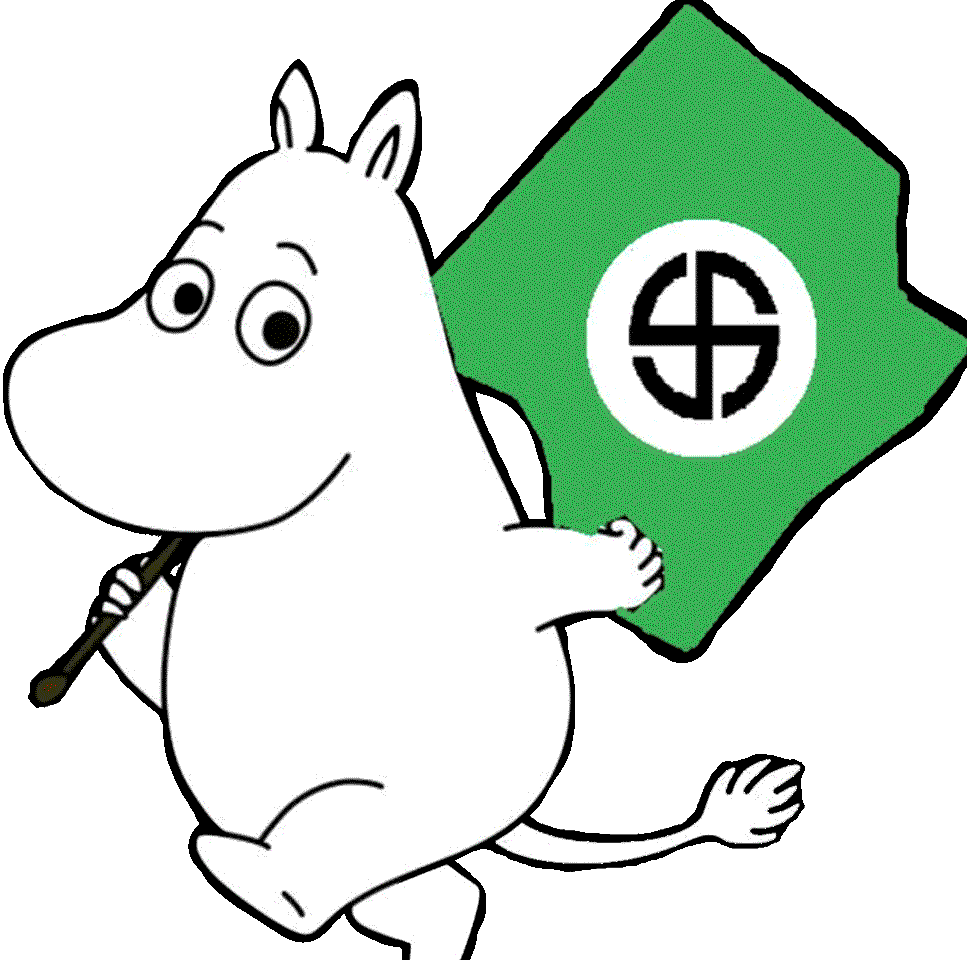
13
Protest stickers
@ett_klibbkonto, 2020s
Vinyl
Over the past few years, a slew of cute characters bearing anti-fascist slogans have appeared on lampposts across Europe. Instagram user ett_klibbkonto uses cuteness, with its everyday familiarity and disarming nature, to accompany controversial political statements about international conflict and human rights (‘Free Palestine’) and the monarchy (‘They Don’t Care if You Fucking Starve’). Conventionally, cute cartoon characters are often associated with children, and their images and meanings are infantilised and de-politicised. This belies long intertwined histories of politics and cartoon characters - the Moomins, for example, were drawn by their creator Tove Jansson for various humanitarian groups including Amnesty International and the Red Cross.
words by Vaishna Surjid
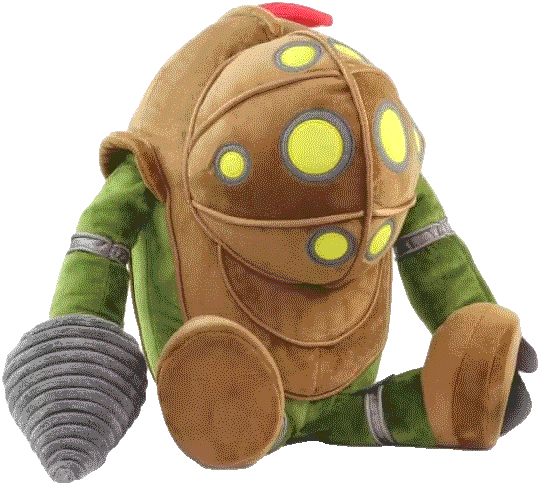
14
BioShock Little Sister and Big Daddy
2020
2K Games
Plushies
Little Sister and Big Daddy are characters in the video game Bioshock, first released in 2007. Rendered here as cuddly plushies, Little Sisters are sinister-looking young girls who have been genetically altered to serve as hosts for a substance called ADAM, a powerful and highly profitable material capable of rewiring genetic makeup. Using syringes to extract it from dead bodies, Little Sisters are able to harbour it in order to resell. The substance is highly addictive, so the Little Sisters are accompanied by Big Daddies to protect them from the violent roaming addicts who will do anything to get their next fix. Bioshock is a first-person shooter developed by Irrational Games renowned for its groundbreaking narrative and visual effects. Set in 1960, players assume the role of Jack, the sole survivor of a plane crash in the Atlantic Ocean, who embarks on a journey into the depths of Rapture, an underwater dystopian city. Conceived by a man named Andrew Ryan as a haven free from government control after the events of World War II, Rapture becomes the stage for a complex tale about morality, the illusion of choice, and the consequences of unchecked freedom. As the narrative unfolds, Ryan, suspecting the player to be an agent from the surface, deploys enemies to eliminate the perceived threat. Atlas, an enigmatic revolutionary against Ryan, seemingly aids the player, urging the acquisition of ADAM. Mined from sea slugs, ADAM serves as both a source of power and a catalyst for societal decay. The material, if used, grants the player abilities to fight the enemies deployed by Ryan, but an ethical dilemma arises as the game forces the player to decide whether to cure or harvest ADAM from the Little Sisters in order to survive.
words by Ailinn Santos